Immediately the fingers of blame came out and details of the incident were slow to emerge. In fact, until Ken Wylie’s telling of being buried, many of the details of what happened were tainted with either the vindictive of revenge, or carefully measured defensive posturing. It was clear the truth lay in between, but the story of a person in a position to share the responsibility of the experience had remained mum, silenced as he would tell by his own unwillingness to first accept responsibility, and then accountability. It was much easier to ride the blame game and stay out of the limelight. Or as Ken revealed in his presentation to a group of 40 at Truckee’s Bookshelf bookstore, among them survivors of the ill-fated party and next of kin to those who died, his unwillingness to be vulnerable about his own contribution to the tragedy.
With the publication of Buried, Wylie takes a bold step to reverse course and share what he experienced, what he knew from the guiding perspective. In the process of telling his tale, he methaphorically digs himself out and frees himself from the bondage of being buried in life.
Ruedi Beglinger can’t be happy about how he is portrayed, but having been to SME several times myself I cannot say the portrayal is completely unfair, nor unbiased. Many have seen that side of his personality, which demands an obedience that is assumed to be for our own good, and as a customer, usually is. It’s why SME has been jokingly referred to as Selkirk Military Experience. Ruedi knows how to harness the aspirations of aggressive skiers to raise the bar for anyone who can keep up. It speaks volumes that so many experienced skiers submit to Ruedi’s leadership.
Wylie’s perspective suggests that Ruedi’s domineering personality contributes to his lack of awareness of the forces at play, both from the perspective of the snowpack, as well as the dynamics of the skiers who had willingly agreed to follow his lead and trust his judgement. Until January 20, 2003, there wasn’t another person in North America who had led so many to harvest so many untracked turns. Thousands of them, over a million vertical feet per year; none lost.
No doubt this track record elevated Ruedi’s confidence in himself; in hindsight, more than warranted. In Ken’s live presentation he leaves room for this contribution, but recognizes it is but one of the many contributing factors of the tragedy on Tumbledown. Ken’s own contribution was not standing up to Ruedi, as he admits, because of his need to be accepted, something we all fall prey to, and not confront others, not have confidence in his own view.
In his presentation, Ken references a story about five blind men in India touching portions of an elephant and relaying completely different experiences of what they feel, the trunk versus the leg, tail versus the torso. The tendency for each is to believe the others aren’t touching the same animal, which prevents combining the views to get a complete picture of the elephant. The other option is to accept and believe the other’s views which allows each view to be combined into a cohesive whole. To Ken’s mind, this is a problem of mankind. It is the core human factor contributing to avalanche deaths. Thus, the biggest factor to account for in groups is open communication and the vulnerability for each person to be honest about their assessment of conditions.
Oh what a tangled web we engage in when skiing with a group. The presence of group dynamics as a contributing factor to avalanche fatalities is impossible to overlook. What Ken makes clear in his presentation is how each of us is busy playing our roles in a world scale Shakesperean play where our habits contribute to the virtue of our characters, and conversely to our stumbling.
In the case of the tragedy on Tumbledown, Ken’s hesitation to say that he didn’t feel right led to impotence in articulating what he knew, if he only had the guts to dig down and clarify his view. He allowed himself to be bullied into pliant submission instead of respected as a skilled peer. One of the victims, Vern Lunsford, minutes before the slope released, told Ken, “I don’t like it.” Ken replied, anemically, “Me neither.” More concerned with avoiding insults from Ruedi, he tells his group to space out 3 meters and continues on.
What is clear from Ken Wylie’s perspective is that the tragedy occurred not so much because of what physically triggered the avalanche, but the combination of human elements creating a scenario that might have still resulted in one fatality, but instead was multiplied seven-fold. The one that so many people bring up in the aftermath is not having two groups on the same slope. This accident has become the text-book example of why you don’t allow that, but there is also plenty of evidence to suggest this very rule is violated a lot without any consequences. Having two unrelated groups on the same skin track in a crowded backcountry location is NOT unusual. However, in a guided situation where the number of people are limited and controlled it seems foolhardy not to adopt it. Except, when one has millions of vertical feet of experience with thousands of clients over the course of two decades, you can also see how it would be hard not to think it didn’t matter as much as the text books say, even unconsciously.
While Wylie’s portrayal of Ruedi is not complimentary in print, in his public presentation there is a distinct absence of malice, even an avoidance of blame. Instead, Wylie focuses on his own complicity and how that contributed to the avalanche that took seven from our midst on January 20th, 2003. It is this humility that makes Wylie’s presentation a must see event, if he’s in your neighborhood.Wylie makes clear how important it is to consider how each of us contributes in a group setting. Both Keith Lindsey and Heidi Bieber related how they felt nervous skinning up La Traviata that day. These are experienced backcountry skiers and they know enough to listen to their own gut. But maybe a decade ago they didn’t have enough experience to recognize it? Or were they stuck in the same paradigm of deferring to their insecurities so they didn’t speak up?
I spoke with Ken briefly after his talk, and shared that I’ve come to the conclusion the easiest way to increase your chance of getting caught in an avalanche is to go with a group. When I’m solo, I don’t take as many chances. It is free soloing in avalanche terrain and a beacon is not a safety net. His eyes lit up indicating he recognized exactly how that should be a baseline for what is acceptable risk.
From my perspective, Ruedi Beglinger was guilty of not seeing the forest for the trees. His expertise has always been technical, and while he acknowledges the importance of human factors, even he would agree that isn’t his area of expertise. It isn’t that he doesn’t know how to put on the charm, but he doesn’t recognize or acknowledge the view of others so well. Me too, and I’ll bet you as well. This played a key part in the silence of the lambs as led to slaughter on La Traviata. Nor did Ruedi know he was doing that. Some still blame him of recklessness but part of Ruedi’s allure as a guide is he knows where that fine line is with avalanches, and at the time, perhaps better than anyone. The problem was, he had become comfortable with that proximity and in so doing, by the sheer numbers of people he was guiding, increased the risk of all involved; not consciously, but inevitably. From Ken’s perspective, an isolationist, self-reliant lifestyle cut Ruedi off from seeing more than what he wanted to see, but needed to see.
Manuel Genswein made a presentation in at the ISSW in Jackson, 2006, where he showed an insurance graph on the probability of a flying accident based on years of experience. There was a peak during the first five years of flying, then the risk dropped for ten years and began to rise again, peaking around 15-20 years. In 2003 Ruedi was on the far side of that. Genswein’s point was we are all susceptible to this because experience breeds familiarity with risk, and we forget how dangerous and unforgiving mistakes can be. Thus, avalanche lizards prefer to dine on experts.
I think that is part of the lesson Ken Wylie wants to pass on in Buried. It is the recognition that this event literally buried him, not merely for 35 minutes in white concrete, but smothered his life for years after, but more as a result of his own character flaws that led him to that fateful day. So too do our interactions and personal blind spots, mental and physical, affect the outcome of those we play the game of avalanche roulette with. In simple terms, pick your partners carefully. How would the story have turned out if, just on that principle alone Ken had stood up and quit the day before? We’ll never know. For guides it is a calling to not only recognize the objective hazards of the mountains, but also the flawed personalities of everyone in the group and how that affects goals and the safety of the group. It’s why there’s more to guiding than technical certification. You’re on your own out there boys and girls, so man up and, as Ken Wylie advises, get vulnerable. 😉PS: Do NOT miss an opportunity to hear Ken, or at least, read his book.
Related Posts
Review: A Life Ascending
Profile: Ruedi Beglinger, guide for the hardcore
© 2014

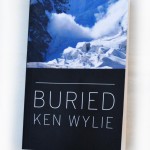
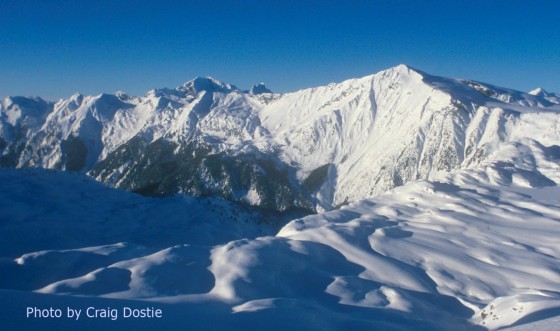
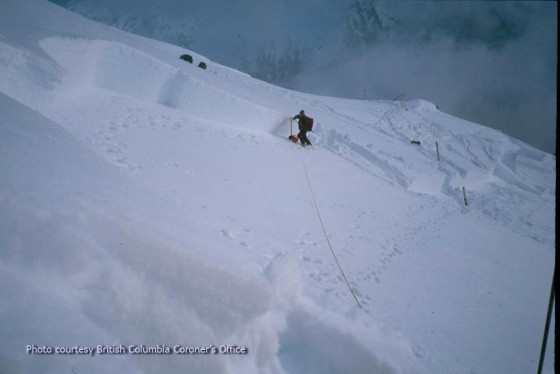
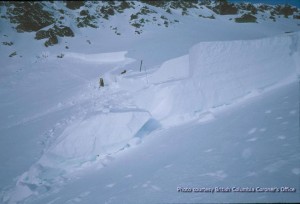
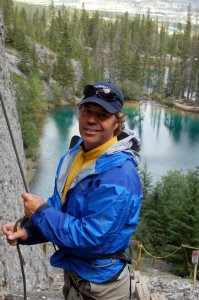
4 comments
Skip to comment form
I have to preface this comment with the fact the I have know
Ruedi Beglinger for 30 years and I have done countless trips with Selkirk
Mountain Experience (SME). Many
before the accident, and many after.
I have a lot of problems with this book and the review.
I can understand re-examining the avalanche based on new
knowledge, but hindsight is often (and easily) 20:20.
One thing is obvious as Ken states himself “I’m not good enough to work
here”. This is obvious throughout
the book. Another statement is
“His harsh words touch off a lifelong trigger inside me. I feel myself shrivel and crawl inside
a cave…”. This is someone who wants to be a guide?
He then goes on to talk about Ruedi’s “tirades”. I have, over the years, I witnessed a
few of Ruedi’s tirades; almost without exception they are not based on
“seemingly nothing”. They are
almost always related in one way or another to client’s (and guides) safety.
There is a particularly illuminating story when Ken goes too
low while leading the group, loses the track, and changes route (this is after
being specifically asked by Ruedi to stay in his track). Ruedi asks him where he is, and after
responding Ruedi responds “F…”.
I’ve heard that flat Swiss-German “F…” a couple of times in my life (I can hear it now), and what it means
is he is very concerned. About his clients (and the guide); it’s
not some personal.
Ruedi is very demanding on assistant guides; no question. He’s hard on them because he wants them
to be better guides; he wants them to be safer and more knowledgeable. I have
seen dozens over the years; I would be willing to bet, almost without
exception, that they will all say that their guiding improved significantly working
with Ruedi. This portrayal of Ruedi (and to some degree SME as a whole) as some
kind of military academy is just not true or fair; if it was true why are there
so many repeat clients and employees?
As far as the specifics of the cause of the accident, Ken
states in his official RCMP report “Yeah, from my judgment the slope appeared
safe” (the official Coroner’s report cleared SME from any wrongdoing). The only new information brought to
light in this book is the persistent little voice (as Magnum used to call it)
of Ken’s misgivings. Only Ken
knows if this is true; and even if it is he should not use it to try to
exonerate himself.
I also have some problems with the review itself. It is not journalism; no one was led to
slaughter (like lambs) on La Traviata. This is hyperbole; it does not belong in
a review. It’s a cruel thing to
say, and it makes me wonder about the motivation behind the review.
As far as the “why” of the book, everyone has suffered
enough. If Ken is really so concerned about the victims and survivors he should
give all profits to the victims families and survivors and/or an avalanche
organization.
Good to see a defense of Ruedi from a long time client. As for the hyperbole, that’s writing and the fact is, those folks unwittingly were being led to their demise like lambs – without knowledge. Of course, that does imply Ruedi knew it, which is absolutely NOT true, and thus does call to question the use of the phrase. On that count your criticism is valid. On the lack of defense for the victims, history shows that to be true. As for it being journalism, it should be clear this is an opinion, thus not strictly journalism which implies impartiality. I’ve skied with Ruedi several times myself and seen how he treats Assistant Guides, and his concern for both safety and people getting their money’s worth (fun). He’s still one of the best. In this incident, there were a LOT of ingredients with regard to personalities and the snowpack that combined to produce a horrific tragedy. This was an attempt to show that there was more to this incident than we have heard about so far, and Ken raises some very valid points.
Everyone has suffered enough is complete tripe and useless nonsense.
Sticking your head in the sand approach might work for ostrich’s but you are trying to bury this for who’s gain? Certainly not those who perished and certainly not the generation now that is living the legacy of dinosaurs such as yourself.
You should give your head a shake (or come back to Revy and i’d be happy to oblige!
Dinosaur–probably. Not much I can do about it.
But, I promised myself a long time ago to not hide behind nom de plume